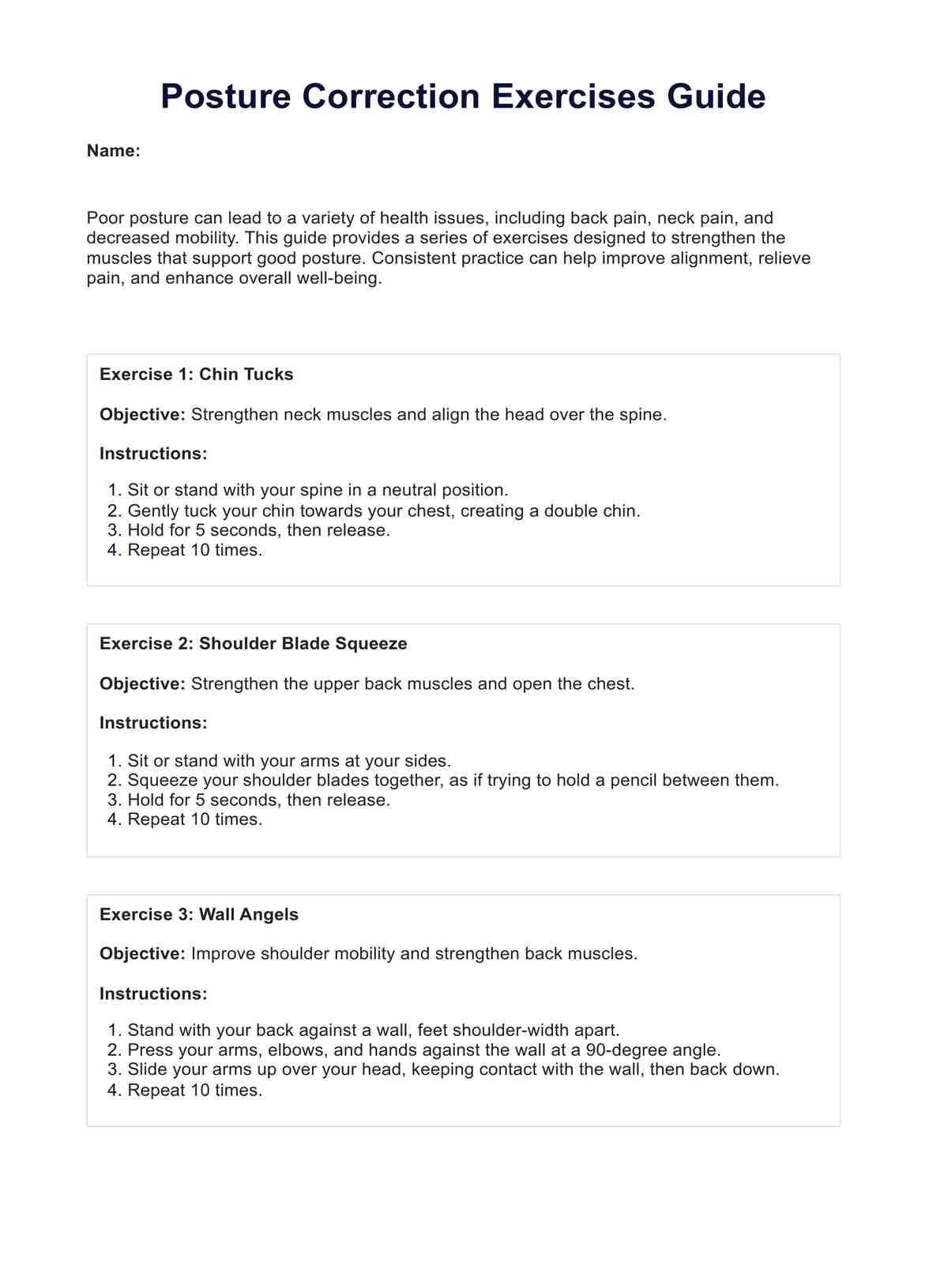For best results, incorporate posture correction exercises into your daily routine, focusing on consistency rather than intensity.

Posture Correction Exercises PDF
Discover the transformative benefits of posture correction exercises: reduce pain, boost flexibility, and enhance overall health. Free PDF guide available.
Use Template
Posture Correction Exercises PDF Template
Commonly asked questions
While these exercises can significantly improve posture and reduce discomfort, some may require additional interventions, such as physical therapy or ergonomic adjustments.
Yes, individuals of all ages can benefit from posture correction exercises, but choosing exercises appropriate for your fitness level and health status is important.
EHR and practice management software
Get started for free
*No credit card required
Free
$0/usd
Unlimited clients
Telehealth
1GB of storage
Client portal text
Automated billing and online payments











